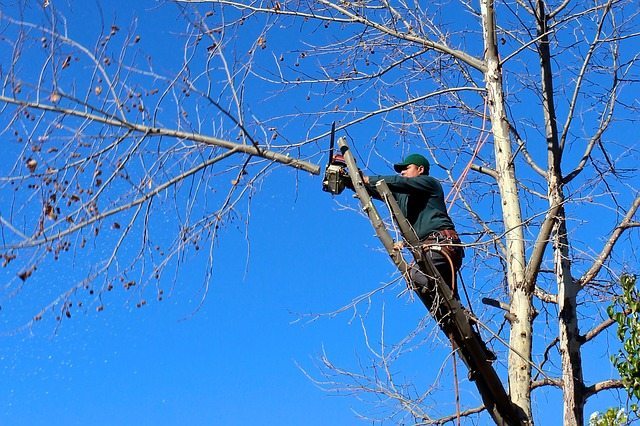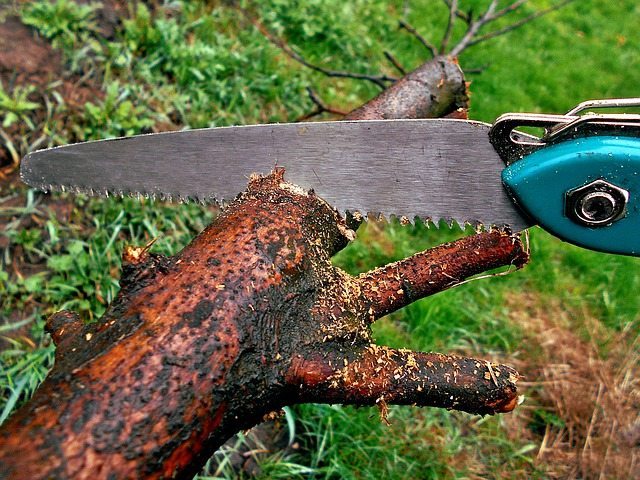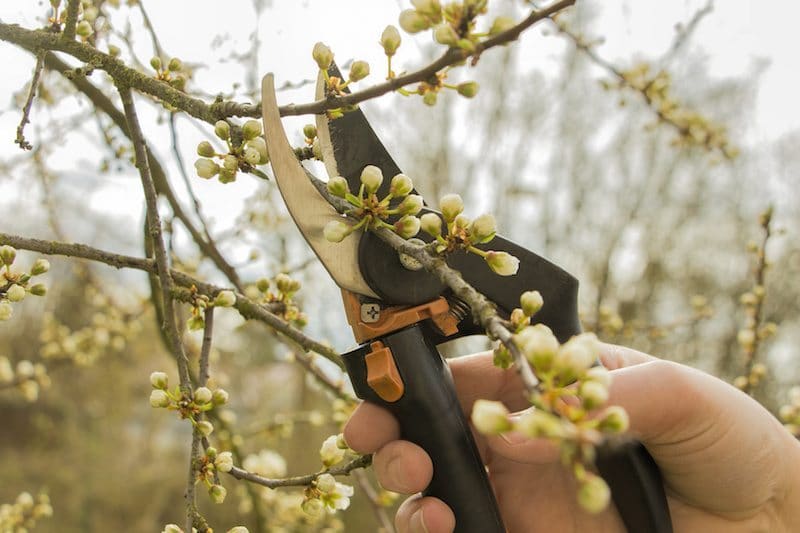You likely already know that filling your yard with beautiful trees can help to increase your home’s curb appeal and value.
Still, in order to keep things looking great, you’ll need frequent tree trimming!
Doing so will get rid of any diseased branches, let more sunlight in, and help your tree to live longer!
In this post, we’re telling you everything you need to know about the basics of tree trimming!
Click to read what you'll find in this post
Why It Matters
In addition to ensuring that your trees stay healthy for as long as possible, tree trimming is also a safety issue.
Especially if you have children that frequently climb trees or play underneath them, it’s a must.
Plus, you need to protect your house – a fallen branch can cost you thousands of dollars in damage!
Of course, taking care of your tree also ensures it stays beautiful. Especially if your tree grows fruit or flowers, proper care can even lead to more blooms and fruit!
How Often Should I Trim?

We wish we could say that there is a magic number which works for all trees.
Though at least once a year and preferably when the tree is not in bloom is a good ballpark figure, there are many different factors that go into deciding how often to trim.
Most Australian native plants are dormant over summer and flower winter to early spring, so the best time for trimming is just after they’ve finished flowering.
If you notice your trees becoming top-heavy we recommend trimming before it becomes un-balanced or over-loaded and breaks.
Sometimes, you’ll just need to do a visual inspection yourself to look for damaged branches. (Often, it’s a good idea to hire a professional to really make sure you’re safe.)
After a storm or windy weather, it’s a good idea to get outside and assess the damage. Also, if the tree grows rapidly, you’ll need to check to make sure its branches aren’t blocking the view of corners or any road signs.
Finally, you need to be sure that the look of your trees always stays consistent with your overall landscape design, and that means regular pruning and maintenance.
What Else Should I Keep In Mind?

There are numerous safety issues associated with trimming a tree on your own. Even branches that appear to be small may actually weigh much more than expected, and fall onto you or property causing damage.
Plus, even if the branch itself is small, you’ll still often need to use a ladder to reach it.
Still, if you feel you can handle a smaller branch on your own, make sure it is no larger than about 10 centimeters thick, and 5 centimeters long.
Always wear gloves and, if possible, something to protect your eyes. We also suggest having a family member stand outside with you, especially if you’re going to be using a ladder.
Most importantly – use good quality, sharp tools!
You’re An Expert On The Basics Of Tree Trimming!
Thanks to this post, you now know what to look for, when to trim, and even how to clip a few branches yourself.
Still, sometimes you just don’t have enough hours in the day – not to mention the expertise needed – to do the job on your own.
That’s where we come in.
Get in touch with us today to learn more about the Perth-based landscaping services we offer.
Let’s keep your home safe and your yard looking great!

